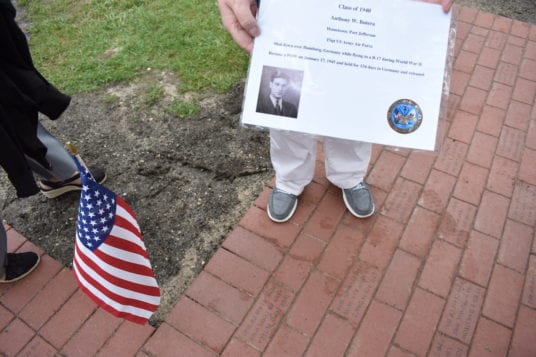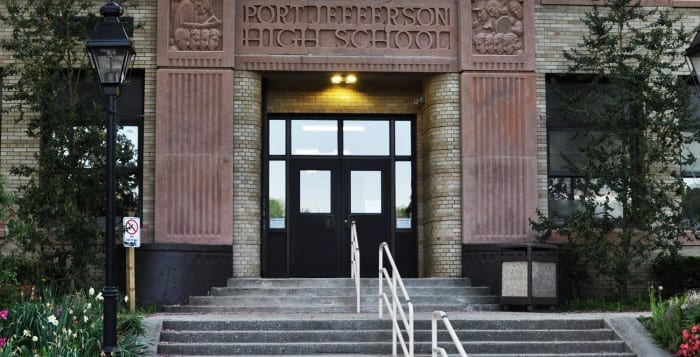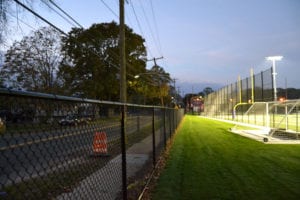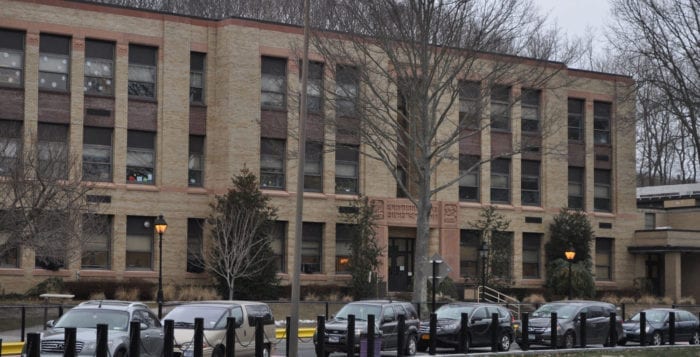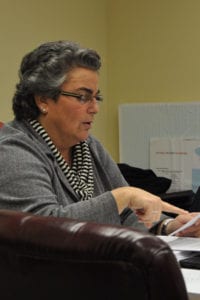For close to a month, Tom Butera, a mason in Port Jefferson village, laid the bricks down for the new Armed Forces Tribute in front of the Port Jeff High School. Though he had been laying bricks for over 40 years, bending over, picking them up, planting them in the ground, to him, every brick represented a family and a sacrifice.
“These we’re the heaviest bricks I ever laid,” he said.
On May 30, veterans cut the ribbon on the new tribute surrounded by well more than 100 local residents. The center of the memorial is a large stone with a plaque on it surrounded by bricks donated by local residents with notes of names of family members who were involved in the armed services. By the end, the memorial looks remarkably like the sketch by high school student Jillian Lawler produced in January, when the brick drive was first announced.
While many donated $100 for each brick, others in the community came out to support the new memorial. Gabe Zoda, 17, a senior at the high school and a member of Boy Scouts of America Troop 45, donated benches to the project, each emblazoned with the fleur-de-lis of the Boy Scouts. Zoda expects to move on to Hofstra University after graduation where he will study broadcast journalism.
The idea for the project spawned from local Vietnam veteran Jim Henke, who had originally approached the district several years ago about building the memorial. It would take years, but the district helped form an Armed Forces Tribute committee in 2017, with local veterans and residents as members, who helped get the project rolling at the beginning of this year.
“Most of these veterans I knew myself from the Vietnam era,” Henke said. “We played ball together, we had a good time in the 60s, and we lost so many of those lives that I thought this was just fitting.”
Though it took time for the project to take root, he said it was the efforts of the school administration and Superintendent Paul Casciano.
“I want to thank the entire Port Jefferson School District community that raised enough brick sales to support the project without any assistance from the school district,” Henke said.
Local residents stooped down to take pictures of bricks donated by friends and family, and the Port Jefferson art staff was on call if people looked to get a rubbing of their bricks.
“I would like to say thank you for the names of the men and women engraved on the walkway,” said high school Principal Christine Austen. “My hope is that this tribute stands as a reminder to all the youth that Port Jefferson veterans are heroes that will always be close to our hearts.”
Butera feels a deep connection to the new veterans tribute. It’s his father’s name, Technical Sergeant Tony Butera of the U.S. Army Air Corps, that is inscribed in one of the bricks. His father was shot down during WWII over Hamburg, Germany, flying in a B17 bomber. His plane landed on a field of sheep, what they called a “fleece-lined landing,” and he and his compatriots were held at gunpoint on their knees by several disgruntled farmers. He became a prisoner of war on Jan. 17, 1945, and he was held for 134 days in a POW camp before it was liberated by troops led by Gen. George Patton. It was with his father that Butera picked up and laid his first brick.
While he looks fondly back on the stories of his father, he sees the different side of war with the record of his son, Greg, a veteran of two tours in Afghanistan. There was a time where Butera had no communication with his son for three months, though now Greg is home, and has a wife and a daughter.
“When it got hard to work, I told myself ‘shut up — these people were in a much harder spot,’” Butera said. “It was such an honor to do it.”
Jim Henke’s name was changed May 31 to correct the spelling of his last name.








